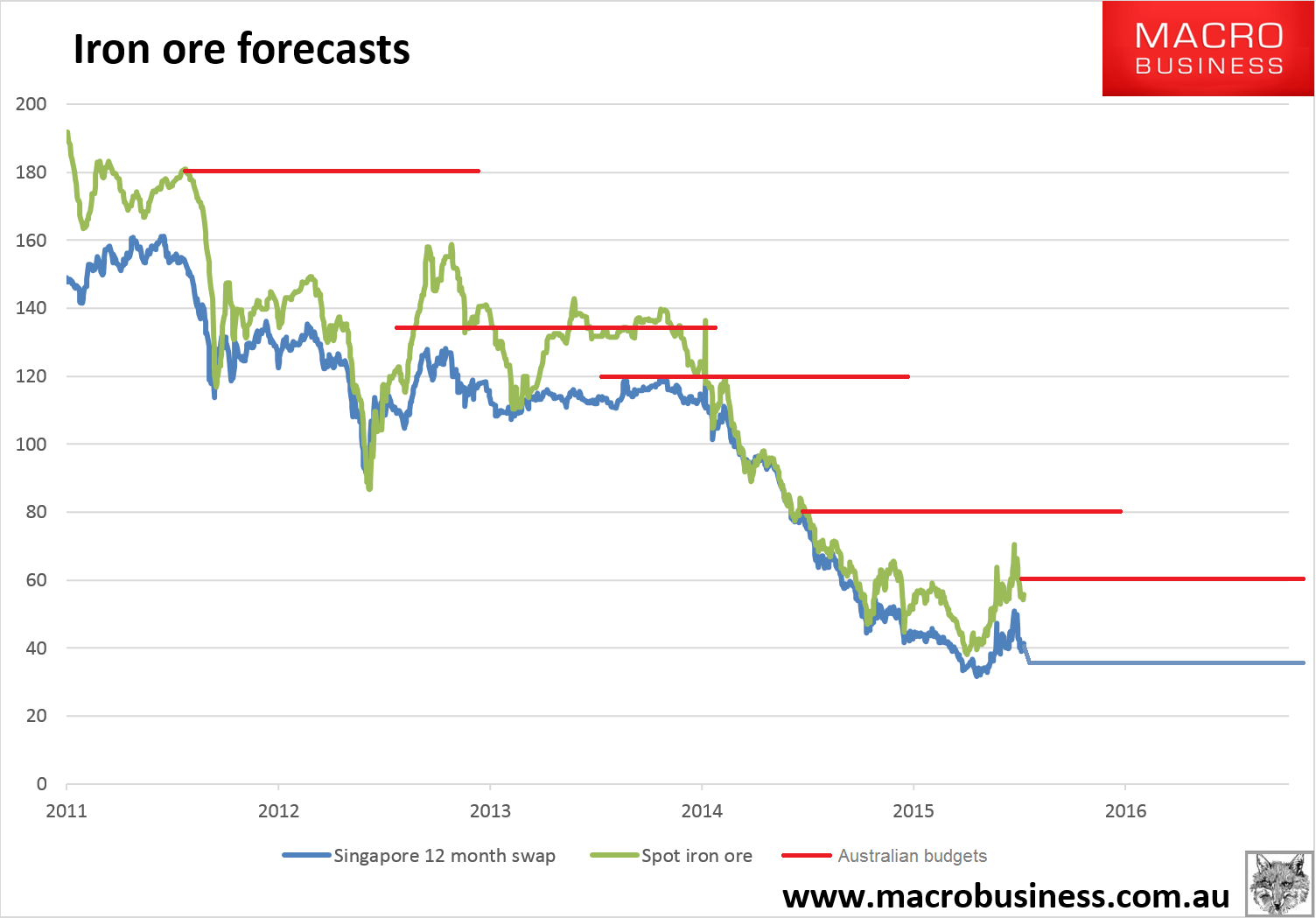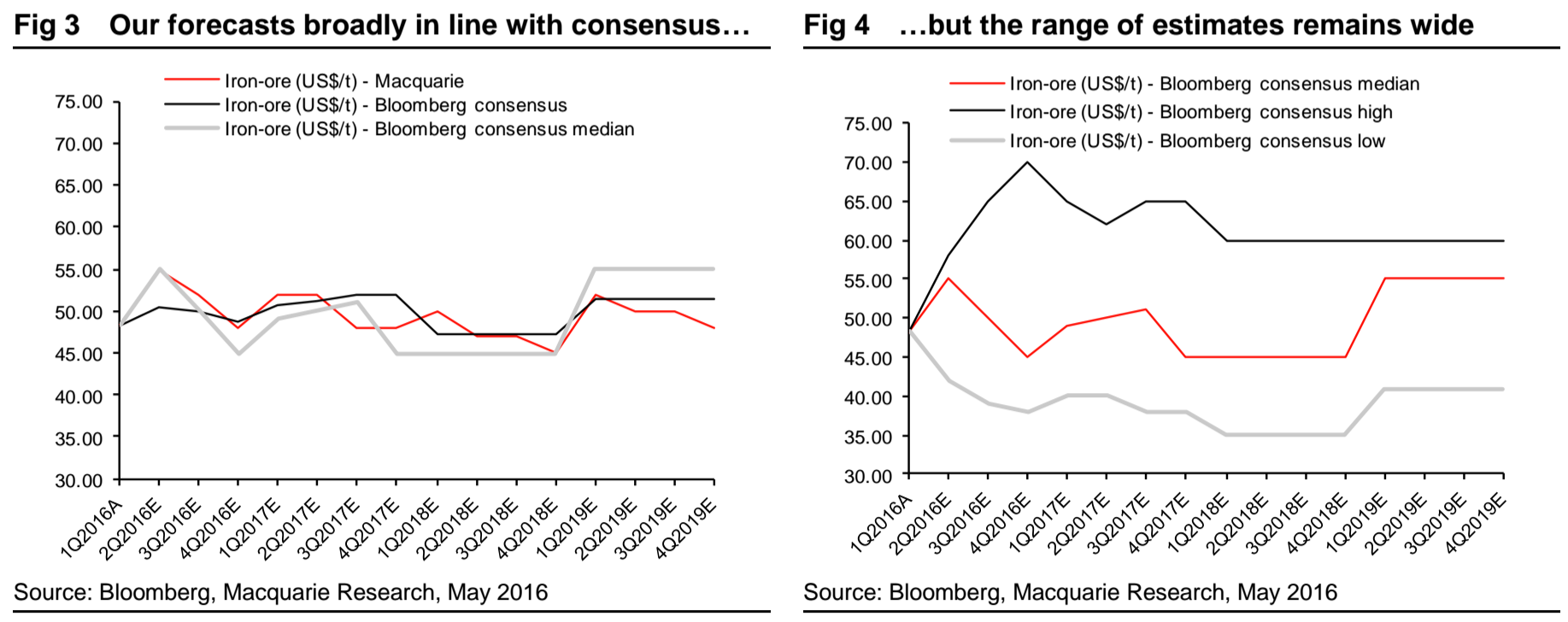From The Mercury:
Finance Minister Mathias Cormann concedes that nobody knows what the iron ore price will be in four years despite it being a crucial element of budget forecasting.
…Senator Cormann insisted it was a technical assumption because it takes the average of the preceding four-week period of the budget and the mid-year review.
It will be the same for PEFO.
“Nobody knows what the price is over a four-year period,” he told reporters in Canberra on Wednesday.
Shadow finance spokesman Tony Burke said Labor always viewed the May 3 budget assumptions as “nothing short of heroic”.
“The government is only coming to terms with this because of the Charter of Budget Honesty, not because they were being realistic with their assumptions in the budget,” he told reporters.
Shadow treasurer Chris Bowen, in his budget-reply speech last week, said the iron ore forecast was more hope than a plan.
It would add $16 billion to the budget bottom line at the “stroke of a pen”.
OK, then, let’s test Mr Cormann’s excuse. Here is the Singapore 12 month swap versus the Treasury’s current methodology:

Throughout the bust the Singapore futures market has been in deep backwardation averaging -12% to spot and that number is held up materially by the close price correlations during falling price periods. Treasury got one year right when it was saved by the 2013/14 China stimulus and collapse in India iron ore sector. Clearly that was a stopped clock.
The fact is Singapore futures markets have correctly forecast the slide in prices and are currently pricing $35FOB for 2016/17, -42% below Treasury.
There’s really no reason for Mr Cormann to not use this tool but if he dislikes it he ccould use the Bloomberg consensus numbers. Investment Bank research has not been as good as the futures market at forecasting weakness but has still been better than Treasury and the current consensus outlook is roughly $45FOB for 2016/17, still -25% below Treasury:

Ye, Mr Cormann, there are forecasting tools to use outside of Treasury, and they are highly credible given they condense all known information about the commodity into a single price.
They’re called “markets”, Mathias, you know, that shit you’re supposed to believe in.

